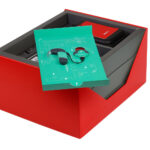MED-EL
Published Dec 07, 2020
Minimal Reporting Standards for Active Middle Ear Implants

It is often challenging to compare studies and perform metanalyses. Data inconsistencies and incompatibility due to different reporting standards are common barriers. Until now, the field of active middle ear implants (AMEIs) has lacked reporting standards. In order to fill this gap, a group of experts has met to reach a consensus and publish their results. This article provides an overview of the most important proposals put forth in this publication.
Because the field of AMEIs is rapidly evolving, the aim of the expert group was clearly defined: to generate recommendations applicable to all current and future AMEIs. In addition, these recommendations should not only focus on audiological tests but also on safety, surgical and quality of life (QoL) outcomes.
Compliance with the suggested minimal reporting standards should result in the following advantages:
- Comparable results
- Acceptance by the wider research community
- Improvement in the quality of AMEI-related publications, if review boards apply these standards as criteria to evaluate articles
- Pooled data as a basis for regulatory decision-making
For clear and fast documentation, a table had been created as part of the publication. This table can be used to gather all pre-operative and post-operative data. It is publicly available here.
In addition to the recommendations regarding the collection of demographic and surgical data, the paper also focused on audiological testing. The following table illustrates all recommended pre-operative and post-operative audiological tests.
| Audiological test | Pre-op | Post-op (min. 6 months) |
| Pure-tone audiometry (AC 0.25 – 8 kHz and BC 0.5 – 6 kHz) |
bilaterally | implanted ear (optional: bilaterally) |
| Speech audiometry (WRS at 65 and 80 dB SPL) |
implanted ear (optional: bilaterally) | |
| Sound field thresholds (0.25 – 8 kHz) |
unaided: ear to be implanted (optional: with hearing aid) | unaided: implanted ear aided with AMEI: implanted ear |
| Sound field speech audiometry in quiet (WRS at 65 dB SPL) |
unaided: ear to be implanted (optional: with hearing aid) | unaided: implanted ear aided with AMEI: implanted ear |
| Sound field speech audiometry in noise (SRT50, adaptiv, S0N0, fixed noise at 65 dB SPL) | unaided: ear to be implanted (optional: with hearing aid) | unaided: implanted ear aided with AMEI: implanted ear |
In terms of safety outcomes, the authors mention the importance of reporting any adverse event that occurs due to the therapy. Along these lines, they also state that the absence of complications or adverse events that had been resolved during study period should be clearly declared as well.
Recommended Questionnaire
Lastly, recommendations to assess subjective outcomes are given. From a variety of different questionnaires, the Abbreviated Profile of Hearing Aid Benefit (APHAB) had been declared as the most suitable assessment. It is a questionnaire which has been validated and is free of charge. It does not require a lot of time to complete, and it is available in 20 different languages. The authors recommend assessing the subjective benefit preoperatively with a hearing aid and postoperatively with the AMEI 6 and 12 months after the first fitting.
MED-EL highly appreciates all of the contributions made to the publication and would like to express its gratitude to all of the authors. We support the recommended minimal reporting standards and endorse their future use on studies related to VIBRANT SOUNDBRIDGE. For more details, please take a look at the publication which is accessible online.
Subscribe & Share
Don’t miss any updates from our MED-EL Professionals Blog—subscribe now!
MED-EL
Was this article helpful?
Thanks for your feedback.
Sign up for newsletter below for more.
Thanks for your feedback.
Please leave your message below.
CTA Form Success Message
Send us a message
Field is required
John Doe
Field is required
name@mail.com
Field is required
What do you think?
MED-EL



